When it comes to dinner rolls that are easy, buttery, incredibly soft and made from scratch, this is the recipe you were waiting for. It's only a matter of mixing and rolling; there's no kneading at all, just a waiting (hands-off) period as the yeast does its magic. I make a batch and keep the rolls frozen for everyday dinners, and also use them for sandwiches.
This recipe has been re-tested with an overnight rise, which is the easiest way to build flavor and make the dough easier to handle.
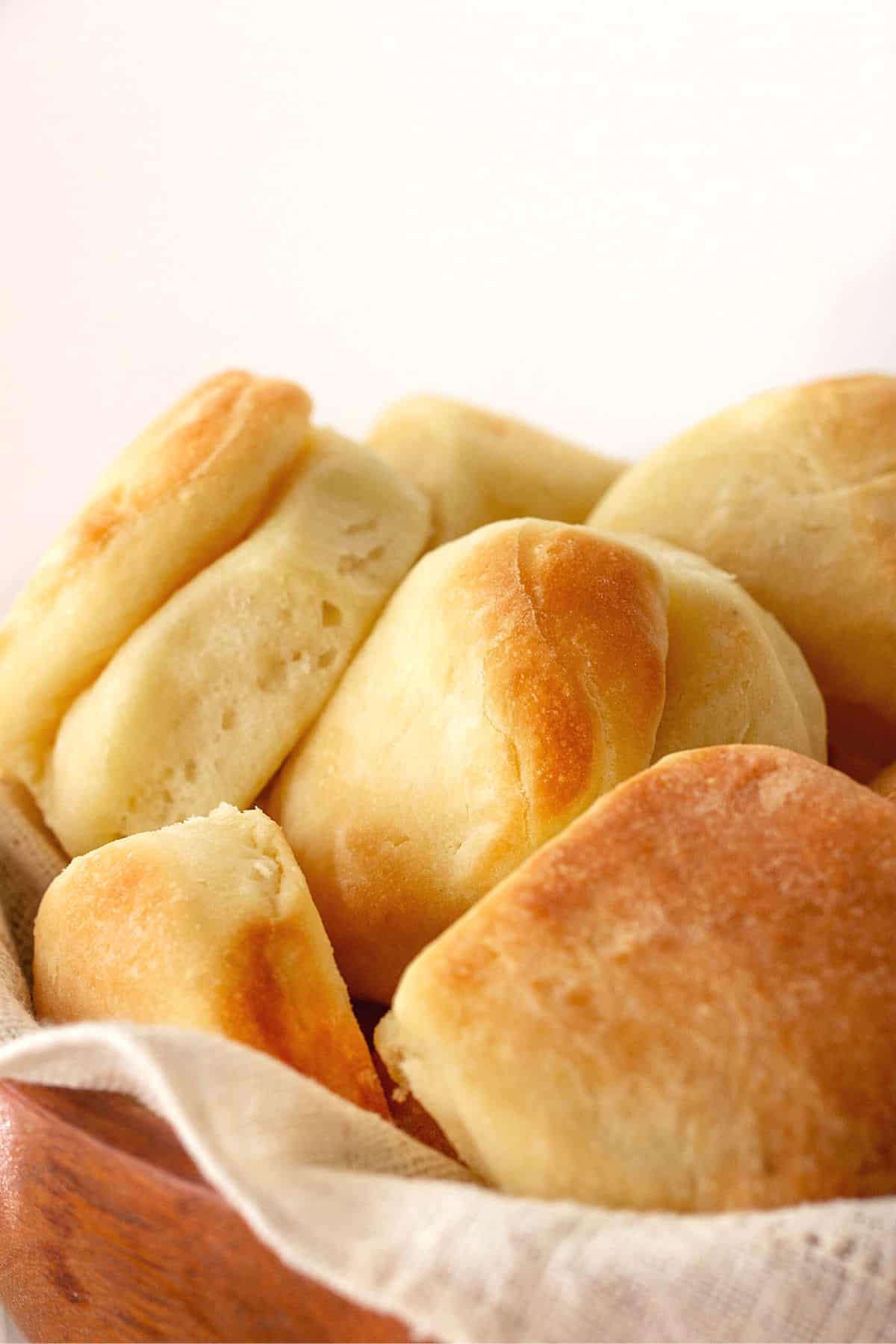
No-knead soft rolls
Sometimes our holiday tables or everyday dinners need gorgeous dinner rolls, the kind that are tender and versatile, that can be kept in the freezer and reheated to order.
What separates them from classic dinner rolls is that they're dipped in butter and folded before baking, to create the traditional shape.
I have a soft spot for no-knead bread recipes, like the fantastic French Bread recipe or this rustic soda bread. This is yet another style of bread, very different from the others.
Why? Because there's no need for a stand mixer or fancy gadgets. A large mixing bowl, a spoon, a rolling pin, the baking pan, and you're set to go. You only need to mix the ingredients until you have a thick batter, sort of a drop scone mixture. So easy!
I also added the option of making soft, round rolls for sliders or sandwiches, which I use a lot for large gatherings when I set up a do-it-yourself sandwich bar. They don't have a lot of crumb and are buttery enough to pair with almost any filling, so they're perfect.
That doesn't mean you can toast leftovers and slather them with honey butter or jam for breakfast. Just saying.

Testing notes
Flour: Though I always encourage using bread flour for yeasted recipes, this recipe works well with all-purpose flour. You can also use both in equal amounts.
Dough consistency: The dough will be sticky and loose before the first rise, but it will become more supple after it. Don't add too much flour; this is what makes the rolls soft and fluffy.
Resting time is essential: Whether you opt for proofing it for a short or long first rise (1-2 hours at room temperature or overnight in the fridge), it makes the dough easier to handle.
Shaping: Traditional Parker House rolls are flattened slightly, dipped in melted butter, folded in half, and arranged close together. Press them lightly so they don't pop open as they bake.
Butter brushing: Each folded roll is brushed with melted butter before and after baking for that classic, rich taste. Talk about buttery rolls!
Pan choice: Use a buttered 9x13-inch baking dish or two smaller pans. Crowding helps the rolls rise upward instead of spreading out.
Ingredients
- Types of yeast: besides active-dry yeast, you can use instant yeast (¾ of the amount given for active-dry), add it to the flour, and then add the water. Or fresh yeast (3:1 ratio) that you crumble, mix with the water and let it foam.
- Water-milk: you can use all water (from the tap or use bottled water if you like) or part milk (which will make them richer and denser). If your yeast is in the fridge and you're using it directly, use warm, tepid water. NOT hot, as it will diminish the strength of the yeast.

How to make Parker house rolls
These rolls are so easy to make! You can use all water, as shown in the video below or use half milk, as explained in the recipe card at the end of this post.
Step-by-step VIDEO
Overnight rise
Chill the dough after mixing: Once everything is combined, cover the bowl tightly with plastic wrap or a lid and refrigerate right away. Don't let it rise on the counter first. The fridge slows fermentation, giving you a controlled, steady rise.
Use a large bowl: The dough will still expand in the fridge, so make sure your bowl allows room for it to double. A straight-sided container makes it easy to see the growth.
Cover well: Cold dough dries out easily. A tight cover keeps the surface soft and prevents a crust from forming. A lid or well-wrapped plastic is better than a kitchen towel here.
Timing: The dough can chill anywhere from 8 to 24 hours. Longer gives you a deeper flavor, but after a full day, it might start to weaken in structure.
Before shaping: Cold dough is stiffer and easier to work with, which helps when folding Parker House rolls. Let it sit on the counter for 20-30 minutes to take off the chill before rolling and shaping.
Final proofing: Shaped rolls will take longer to puff up when starting cold. Be patient as this can take 1 ½ to 2 hours at room temperature. Look for visibly puffy rolls, not just the clock.
Process steps

Butter the top
Before covering the bowl with a clean kitchen towel or plastic wrap, the surface is brushed with melted butter.

Rough dough
After the first rise, the dough is ready to be rolled and formed. Make sure you have a lightly floured surface where you'll be working.
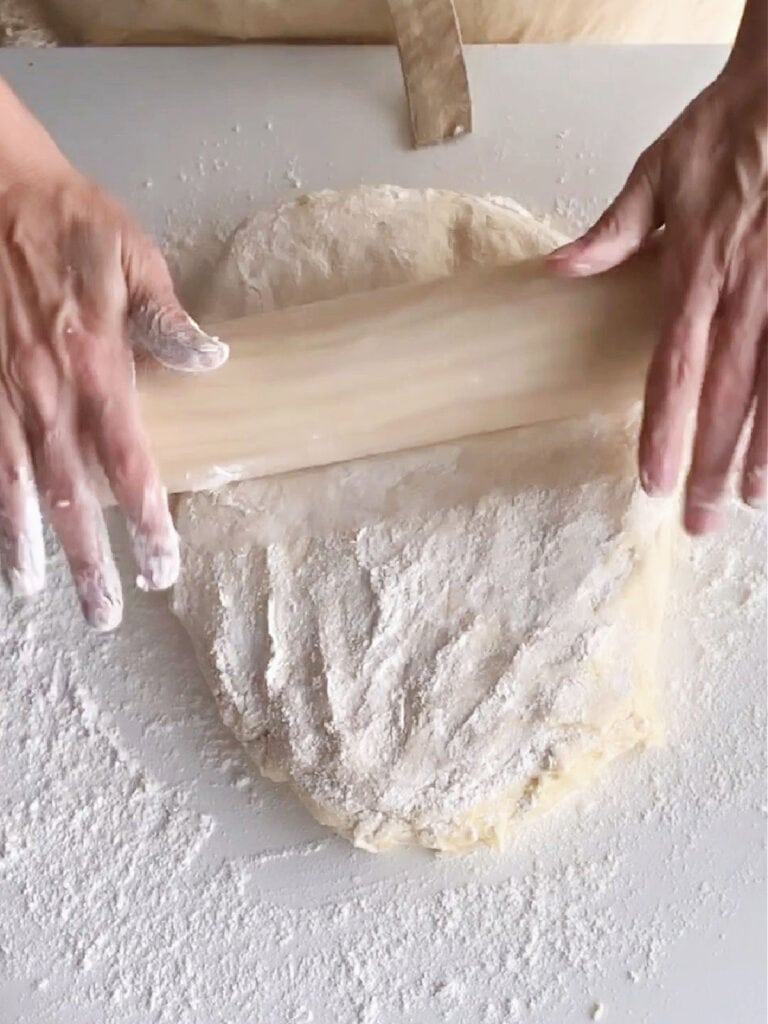
Flour and roll
The dough is dusted with extra flour (pretty generously) so it can be rolled without sticking.
The extra flour is then brushed off before cutting the bread rounds.
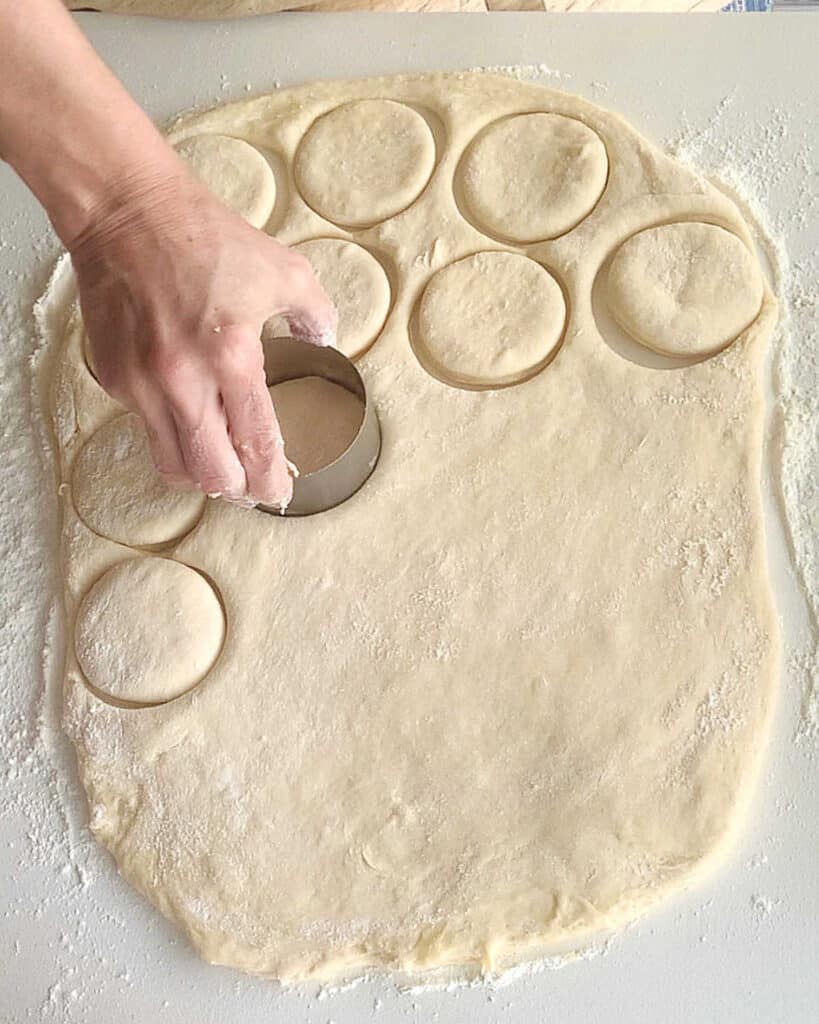
Roll and cut
Use a round cookie cutter to cut the rolls, similar to cutting biscuits.
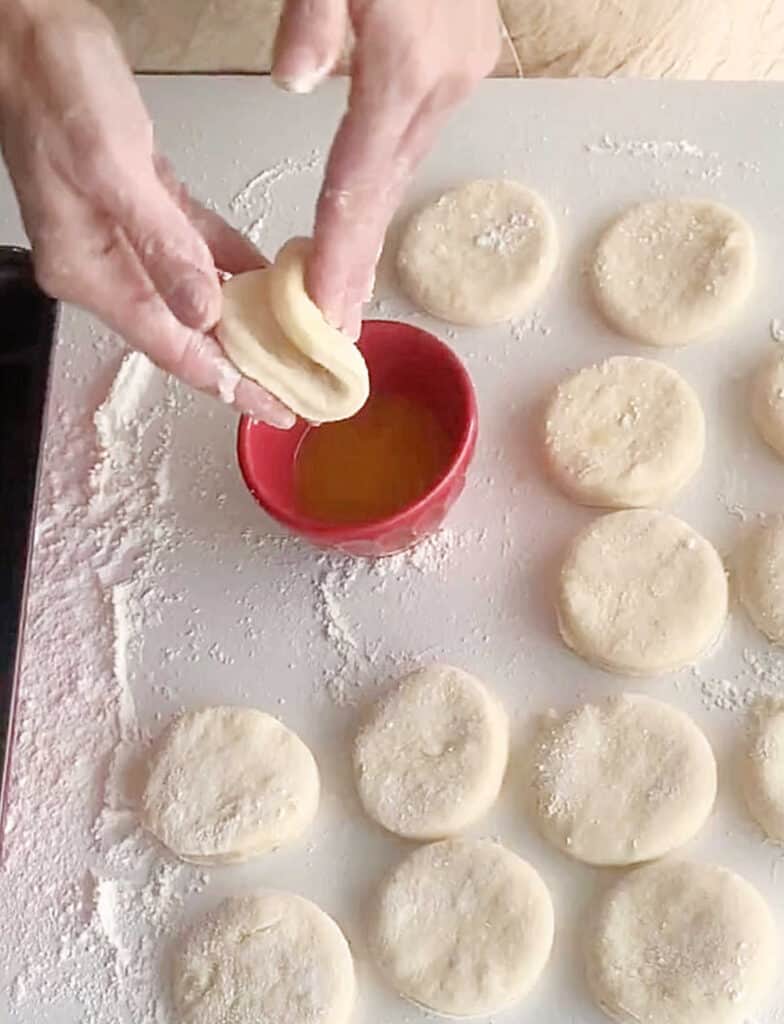
Butter dipping
Half of the flat pieces of dough are dipped in melted butter and then folded over themselves. This creates the characteristic shape of the Parker rolls.
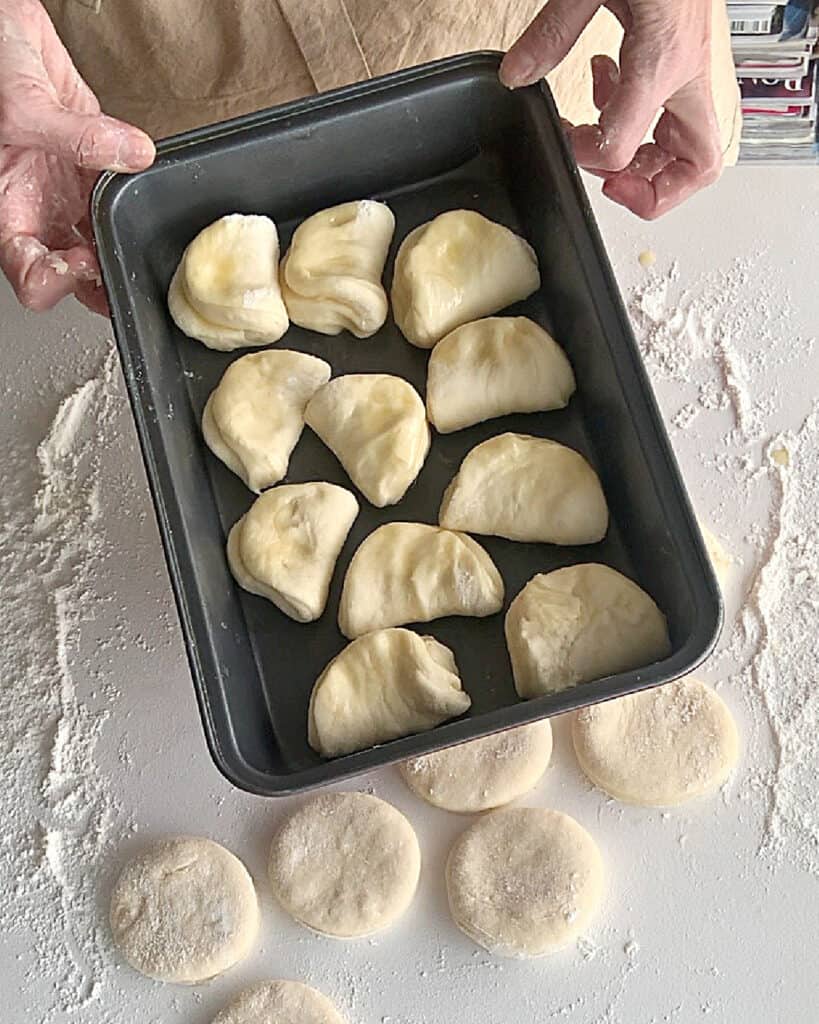
Last rise
The folded rolls are placed in the pan. I don't follow any pattern, but you can arrange them neatly in rows.
Sandwich buns
I realized this recipe makes outstanding buttery sandwiches and burger buns.
Make-ahead: You can make a large batch and freeze it until needed. It's a great way to have buns ready at all times.
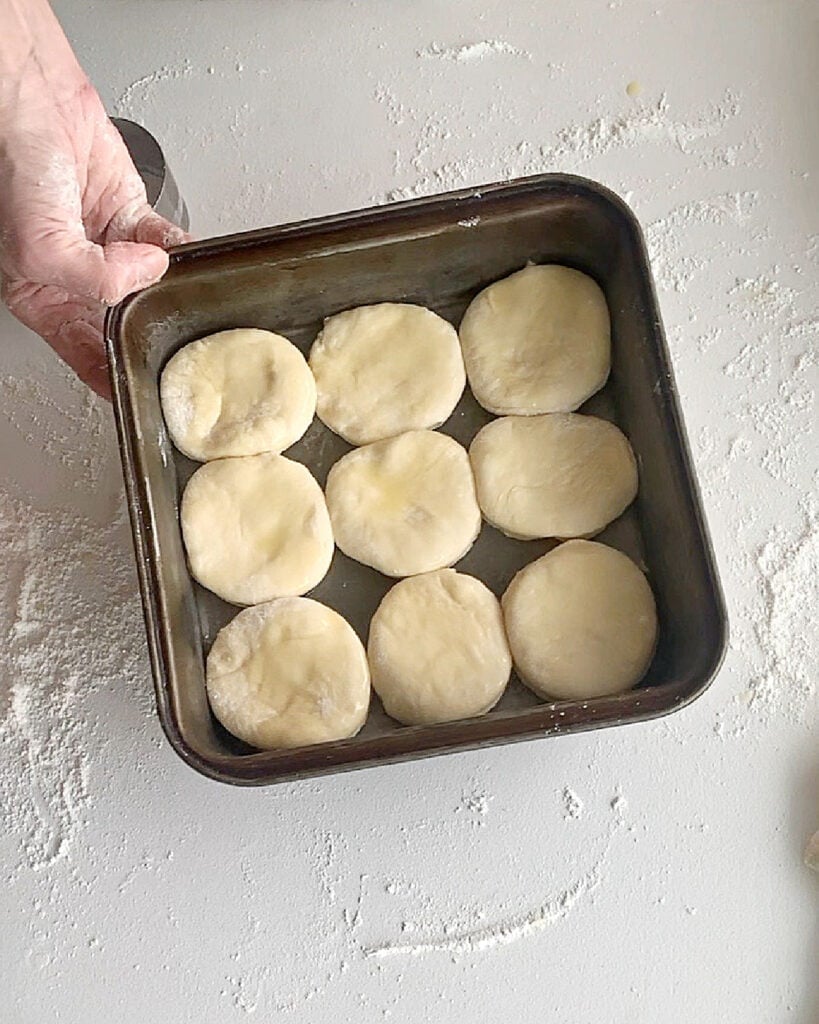
Fit them snuggly
Use a square metal pan (like the one you use for brownies), and place the flat pieces of dough touching each other.
Brush with melted butter and let them rise until fluffy.
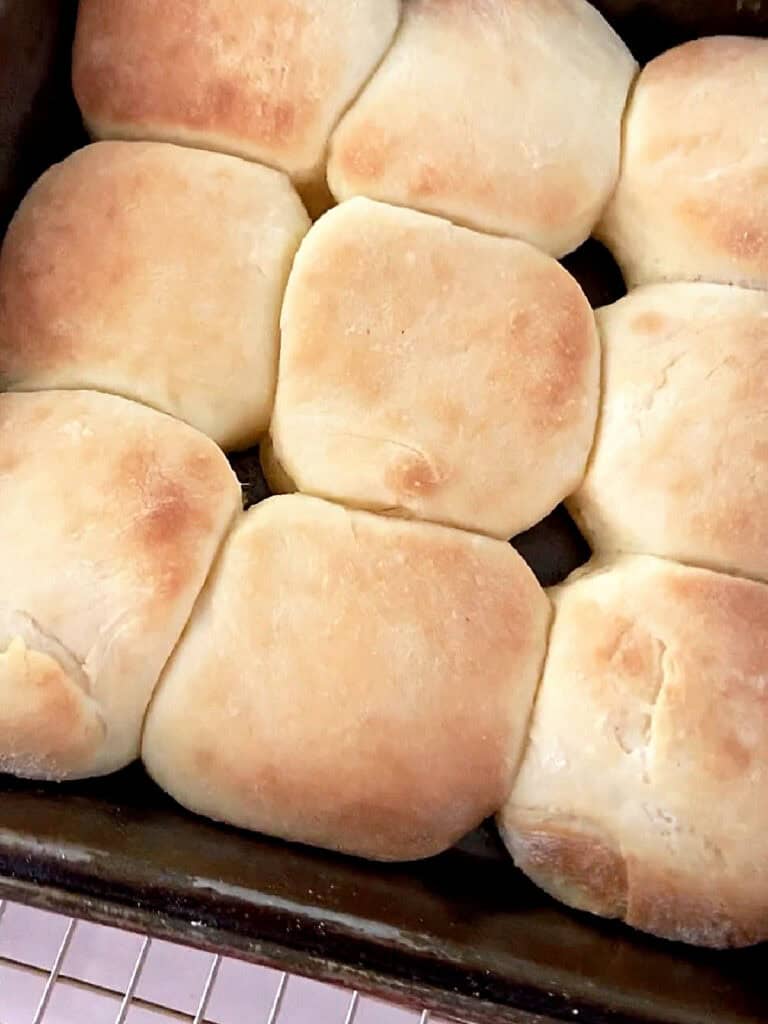
Baking buns
Bake until dry and golden brown.
They should not rise too much. This is perfect for sandwiches, where flatter buns with less crumb are better.
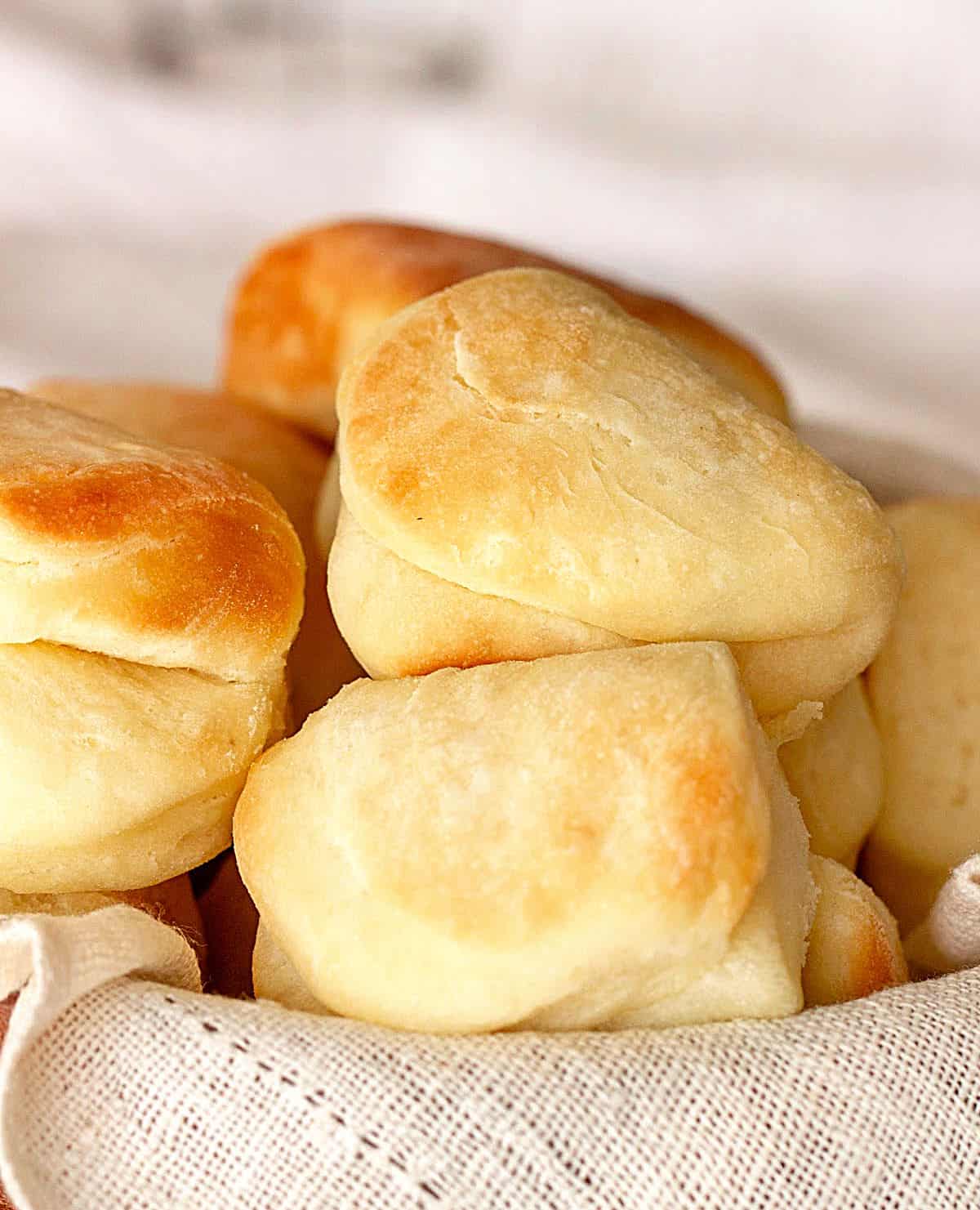
FAQ
They are best eaten in the few hours after they are baked. For longer storage, wrap and refrigerate for up to a week or freeze for up to a month. Warm before eating; see the following question.
Place in a medium oven (about 325°F) for about 8-10 minutes. The same goes for frozen rolls, but it will take longer.
Yes, you can! And you should do it after the first rising. I recommend directly in the pan, already formed and well covered. Let them thaw at room temperature and let them get puffy again before you bake them.
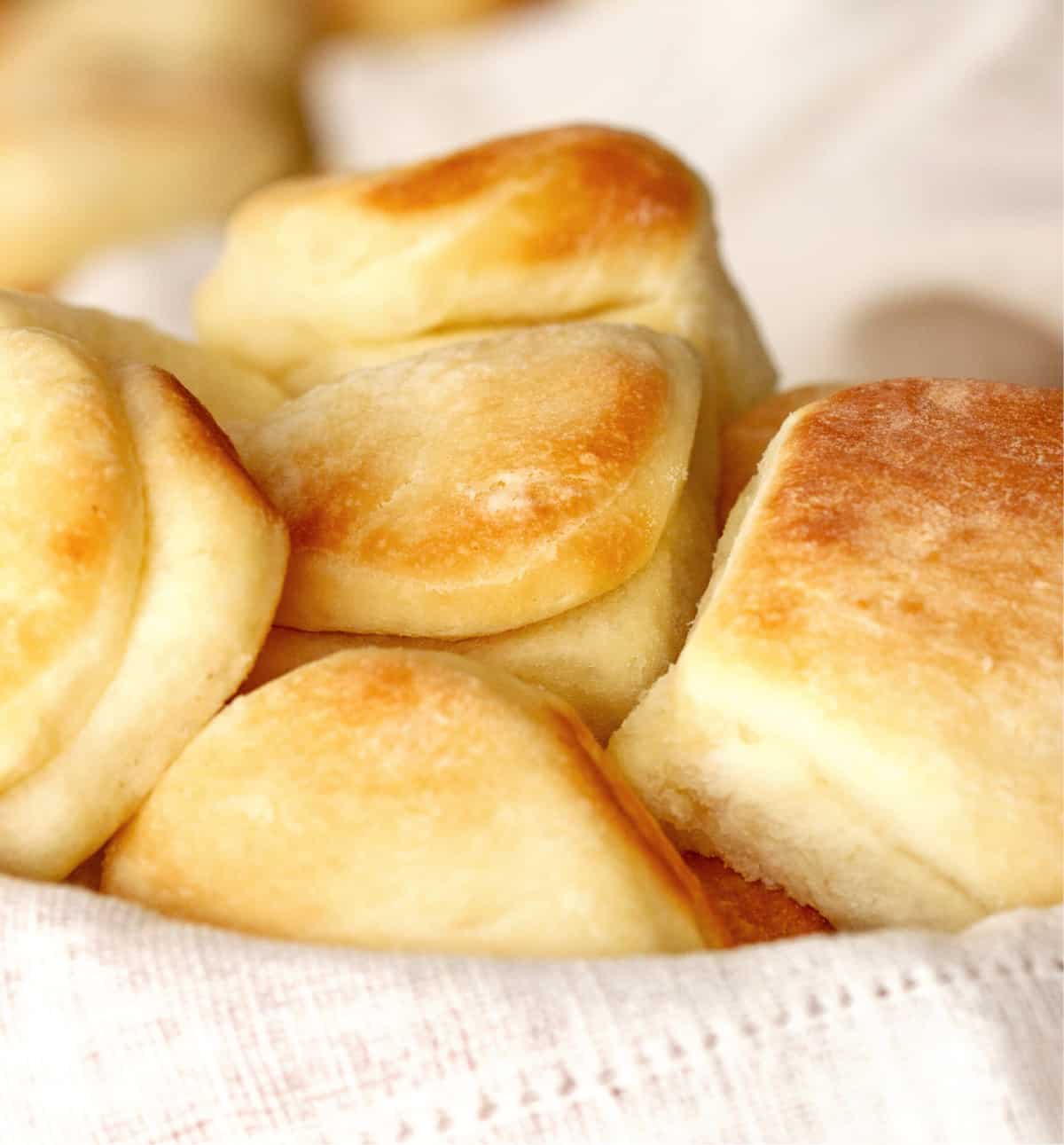
If you made this recipe and loved it, you can comment below and leave a 5-star ⭐️ review. Also, if you had issues, let me know so we can troubleshoot together.
You can also subscribe to our FREE email series 'Baking the Best' and our regular newsletter. Or follow and save my recipes on Pinterest.
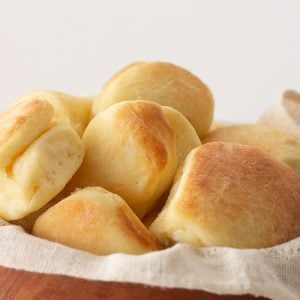
Easy Parker House Rolls (no-knead recipe)
Ingredients
- 5 cups all-purpose or bread flour
- 2 ¼ teaspoons dry yeast, 0.25 ounce (7g) packet
- ¼ cup sugar
- 1 cup warm water, tepid, not hot
- ½ cup warm milk, lukewarm, not hot
- 1 ½ teaspoons salt
- ½ cup unsalted butter, melted and warm
- 2 eggs, at room temperature
- extra melted butter, to brush over the batter
- extra flour, for dusting and rolling
Instructions
- In a bowl, put 3 ½ cups of the total amount of flour. Make a hole in the middle and add 2 ¼ teaspoons dry yeast, ¼ cup sugar, and half of the water, ½ cup. With a spoon or spatula, mix until everything is moistened.
- Add 1 ½ teaspoons salt, ½ cup unsalted butter, melted, and 2 eggs. Mix well.
- Add the remaining 1 ½ cups flour (in 2 parts for easier mixing), ½ cup warm milk and remaining ½ cup water, and stir or mix everything energetically until it's well integrated, with no visible egg white left, and looks like a thick paste similar to drop scones or very thick pancake batter. It is a wet batter.
- Leave the dough in the bowl and brush with top with extra melted butter, covering the entire surface.
- Cover with a clean kitchen towel or plastic wrap and leave to rise in a warm place until doubled in volume, 1 hour to 1 ½ hours.
- Generously dust a table or surface with extra flour and dump the dough. Flatten it into a rectangle and flour the top. Roll with a rolling pin until it's no more than a ½ inch (about 1 cm)
- Cut rounds with a cookie cutter.
Forming the rolls:
- For traditional Parker House rolls: take a round of dough, stretch from both ends a little to make it slightly oval, dip half in melted butter, fold in the middle, and put on buttered baking sheets with the butter side up.
- For sandwiches: put on buttered pans, put the rounds of dough. Brush them with melted butter.
- In both cases, cover and leave to rise for about 30 minutes, until they puff up a bit.
- Meanwhile, turn the oven to 400°F (200°C).
- Bake for about 15 minutes, or until golden brown and dry.
Notes
Adapted from Sister Schubert's Bread Recipes.

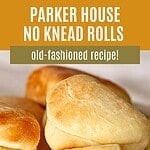

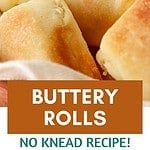
Grandma'sDarling says
This recipe worked up beautifully. Simple instructions. My Mom and I had fun reliving her mother's baking days. A shared experience with a buttery finish Thank you
Paula Montenegro says
So glad to hear that! We love them here also.
Laura says
I’m not a big baker so I need more recipes like this one, easy to follow with simple ingredients! The buns look so so yummy! ❤️
Paula Montenegro says
Thanks Laura, they are so easy! The no-kneading makes them perfect for even the most beginner bakers.
Loreto Nardelli says
Your dinner rolls are stupendous. I just imagined then right out of the oven, and me ready with a pat of butter on my knife. Nothing like a freshly buttered still warm dinner roll. I'm hungry!
Moop Brown says
These look so tasty! I really appreciate how straightforward the recipe is and how well you explained everything.
Paula Montenegro says
Thank you Moop, have a great week!
Kushigalu says
One of my favorite rolls to try for Thanksgiving. Your version looks amazing. I will try it this way. Pinned.
Tammy says
First of all, I love the step by step guide...seeing it in motion is super helpful! These looks so good and you make them look so easy too...I cannot wait to try these! Nothing beats homemade bread!
Aimee says
Can this dough be refrigerated and brought back to room temp before making rolls? I have some left and no more time to do rolls.
Paula Montenegro says
Yes Aimee, you can. Let me know how they turn out!
Marta says
I love making Parker House rolls, but never loved the kneading part. Now I can make them even easier. Thanks for another hit recipe!
Sandra Shaffer says
Nothing beats homemade rolls and from someone that always have a tough time with rolls, these are going to be my go-to roll recipe. Delicious and easy to make. These are great slider rolls for leftover ham and turkey.
Farrukh Aziz says
Hi Paula,
The moment I opened your Parker House Rolls post, my little one was "wow, these are so delicious! "
I know what I have to make next for her in holidays! Slathering this with lots of butter and I am going to enjoy it just like that with hot cup of Masala Tea,OMG what heavenly combination it is! Thanks for sharing! 🙂
Aleta says
These dinner rolls are EXACTLY like the ones my mom used to make when I was a kid. They remind me of turkey dinners and leftover sandwiches. Thanks for the recipe!
Bernice Hill says
Wonderful!! I was just talking to my son about what I should bring to his Thanksgiving celebration next week. The only thing left was buns!